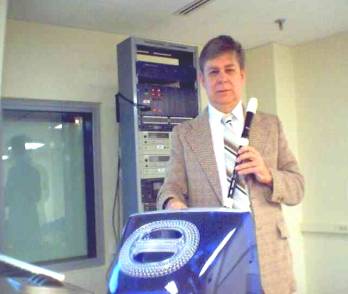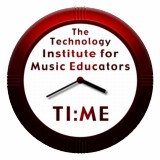|
|
|
|


for:
TMEA/TI:ME
2009 Conference-San Antonio
February 11-14, 2009
Presentation online at: http://fredkersten.com/TIMESanAntonio/TIMESanAntonio.htm
Handout provided at Presentation
Abstract
This
presentation examines opportunities for accommodation and inclusion of students with exceptionalities in the music classroom through utilization of music technology. Visually Impaired, Physically Handicapped, and Hearing
Impaired are areas of exceptionality that will be considered. Software, examples
of ongoing research, current projects and various commissions in action will be
explored as part of the presentation.
Presentation
Envision Possibilities!
Bias Dictates Actions Many students with disabilities on college campuses
never realize their potential, as they are never seen. At times we tend to focus
of the generic status quo we see each day. Music Technology is doing wonders for
individuals with exceptionalities and providing opportunities for performance and participation
in distance education and classroom music activities
Physically
Handicapped
The
Drake Music Project
Based in England, The Drake Music Project provides opportunities for
disabled musicians of all ages and abilities to explore, compose, and perform
music. Using specialist and
adapted music technology, Drake Music enables disabled children and adults who
are unable to play conventional musical instruments to compose and perform. The project illustrates possibilities
for disabled and non-disabled artists to be able to perform together. http://www.drakemusicproject.org/makepage.asp?page=1
Performance by Charlotte White--Charlotte White, St Roses School, Stroud, plays using a MIDI sensor with her head as well as two switches with her thumbs. Her other interests include mouth painting, and photography. She has a goal to work as a music therapist upon graduation. Her newest achievement is AWESOME! Click Here to share this!
Adaptive
Use Music Instrument Software
This software, with the addition of a webcam, allows individuals to use head
movements in composition and performance of
music. A demonstration on the Deep Listening site illustrates how the
software works. http://www.deeplistening.org/site/adaptiveuse/media
Additionally, RPI has developed a program using similar software that allows
physically challenged students with severe physical disabilities to create music
by using their heads. Information is at: http://www.eschoolnews.com/news/top-news/news-by-subject/curriculum/?i=50703;_hbguid=96411d65-0eec-4278-b39d-bdb1bddf9b92
Assistive Technology Controllers for Music
Yamaha
WX-5 Wind Controller.
Developed by Ruud van der Wel– Netherlands, Breath Therapy and Musical
Breathing Exercises (respiratory therapy) utilizing the WX-5 assist Spinal
Muscular Atrophy, and Muscular Dystrophy. Band performance is also a
possibility as transcriptions to accommodate timbres will allow parts to be
covered as well as providing participation. Online
Teaching Suggestions, MIDI and Audio File Accompaniments are available on a
dedicated page http://www.mybreathmymusic.com/
Headbangers--software developed by Jon Adams from Brayton School at the Massachusetts Hospital allows students to sound notes and vocals with whatever movement they can best make -- a squeeze of the hand, tap of the finger or a bang of the head.
Deaf/Hard-of-Hearing
Cochlear
Implant--stellar new direction for deaf /hh present hearing of speech and
eventual hearing of "full" spectrum music. The
trick now is to optimize the system for music. Getting the pitch and frequency
of music is difficult. Wireless
is also a challenge. One idea is to link the external ear piece with the MP3
player through Blue tooth.
Evelyn
Glennie Outstanding Deaf Percussionist
*Excellent
essay by Evelyn on perception of sound by a deaf musician.
Blind/Visually Impaired
What is JAWS? JAWS for Windows is a powerful
accessibility solution that reads information on your screen using synthesized
speech. JAWS provides many useful commands that make it easier to use programs,
edit documents, and read Web pages. With a refreshable Braille display, JAWS can
also provide Braille output in addition to, or instead of, speech. An array of
versatile features and customizable options lets you tailor JAWS for your
individual needs and preferences.
Jsonar is a set
of JAWS scripts that enables users of this audio screen reader to use Sonar
professional music recording software.
Lime
Aloud works with JAWS as part of GOODFEEL software. With
Lime Aloud, you can navigate through a musical score using standard cursor keys.
Your PC plays each note or chord and verbally describes related annotations such
as accents, staccato marks, lyrics and ties via the JAWS screen reader software.
Toccata (notation and
import software) imports MIDI, MUSIC XML, and NIFF (Notation Interchange File
Format) as well as functioning independently as a notation editor. Exports in
Braille, to printer, and to Toccata notation files.
Additional Music Transcribing Software
Assistive technology on your Mac, PC